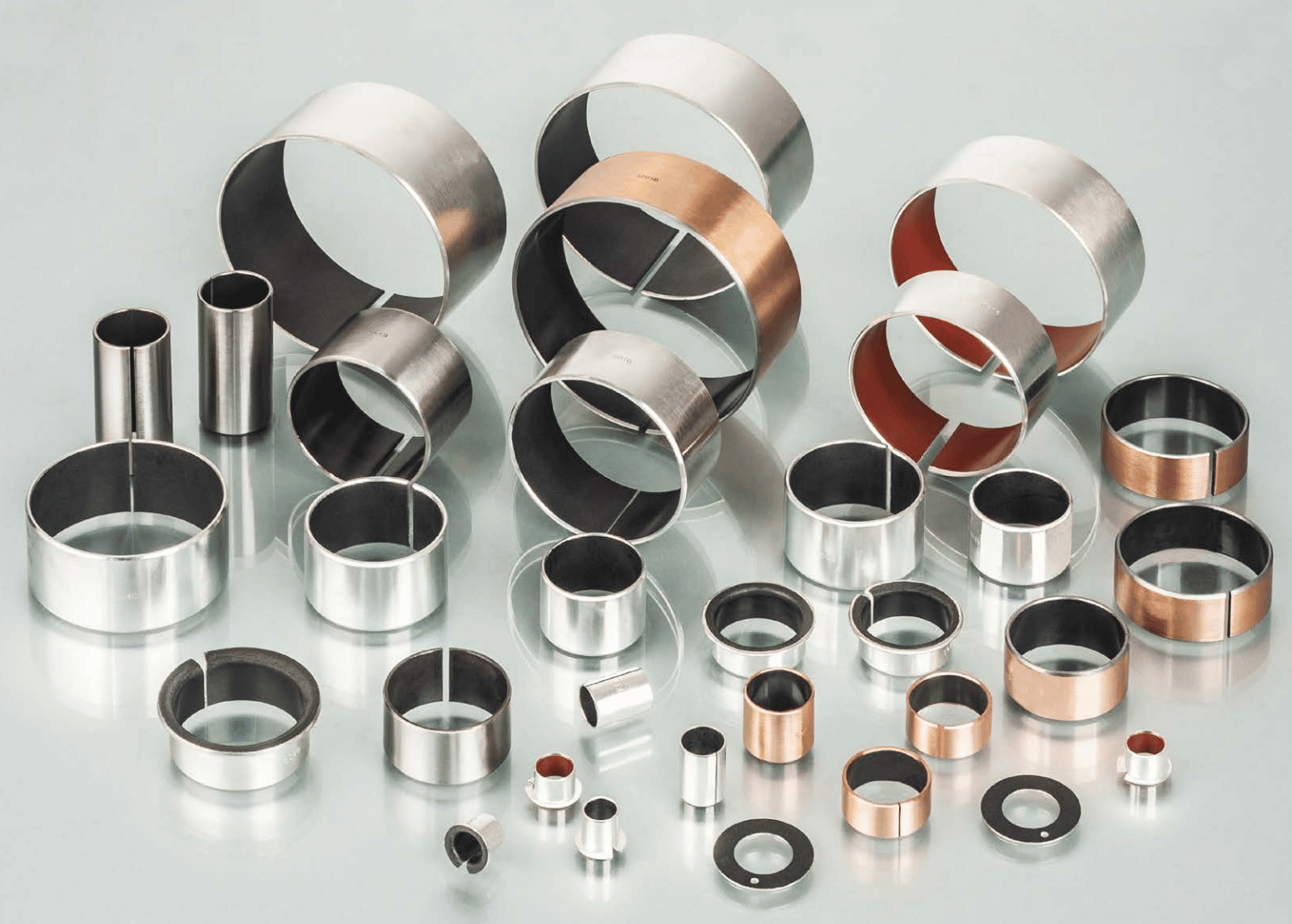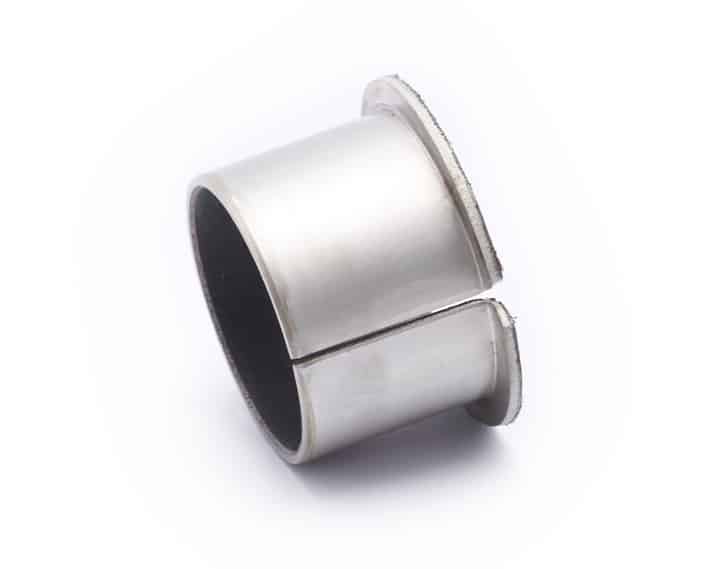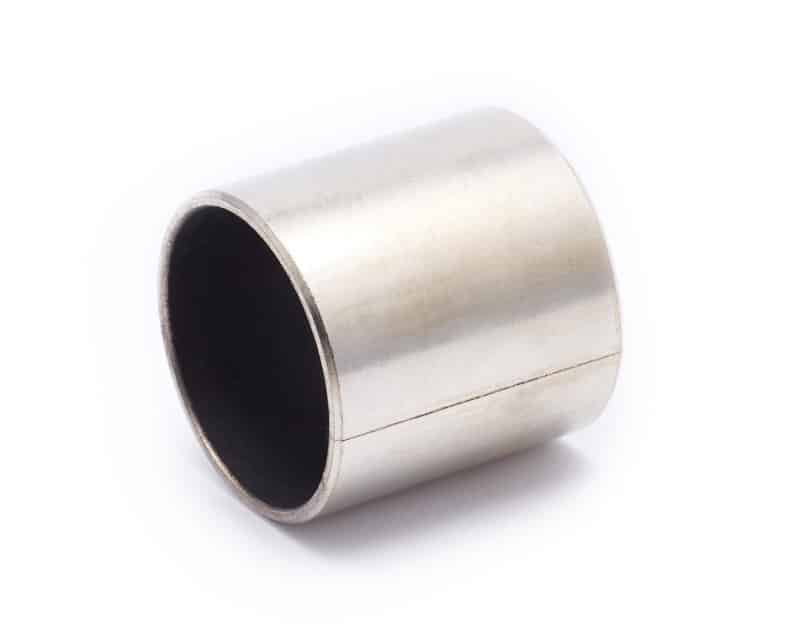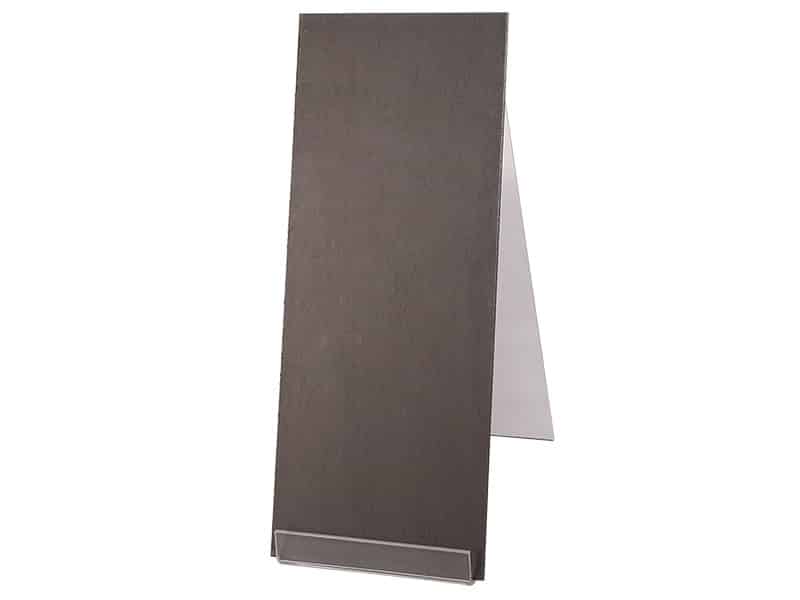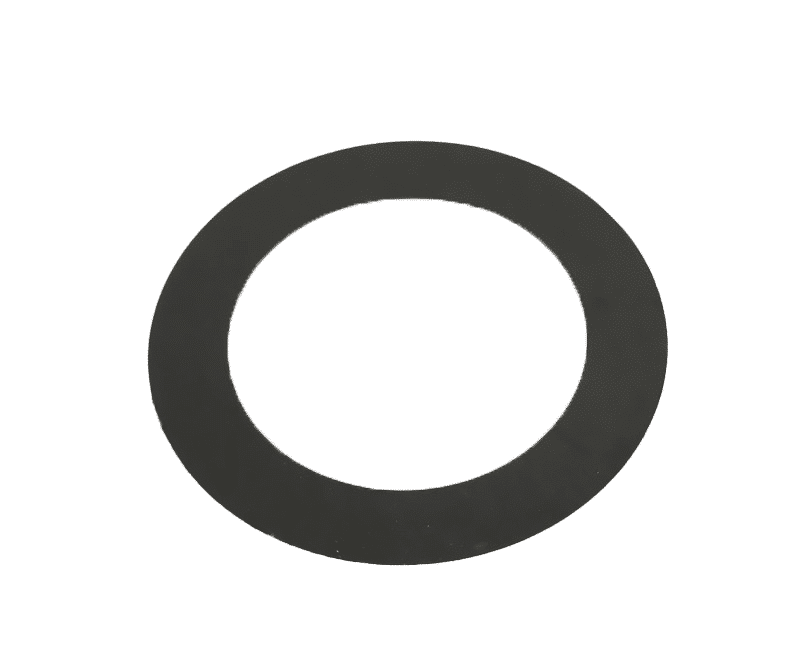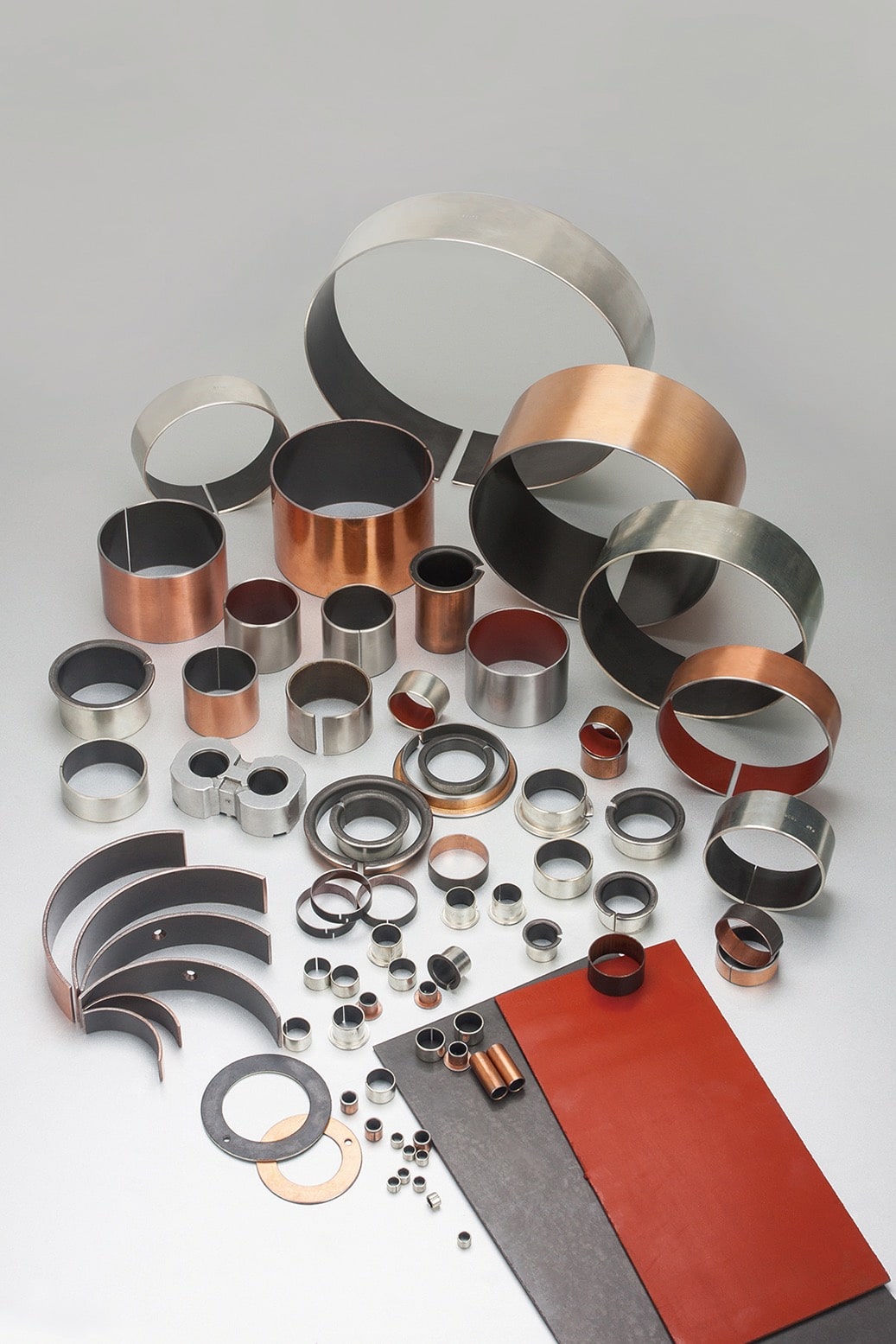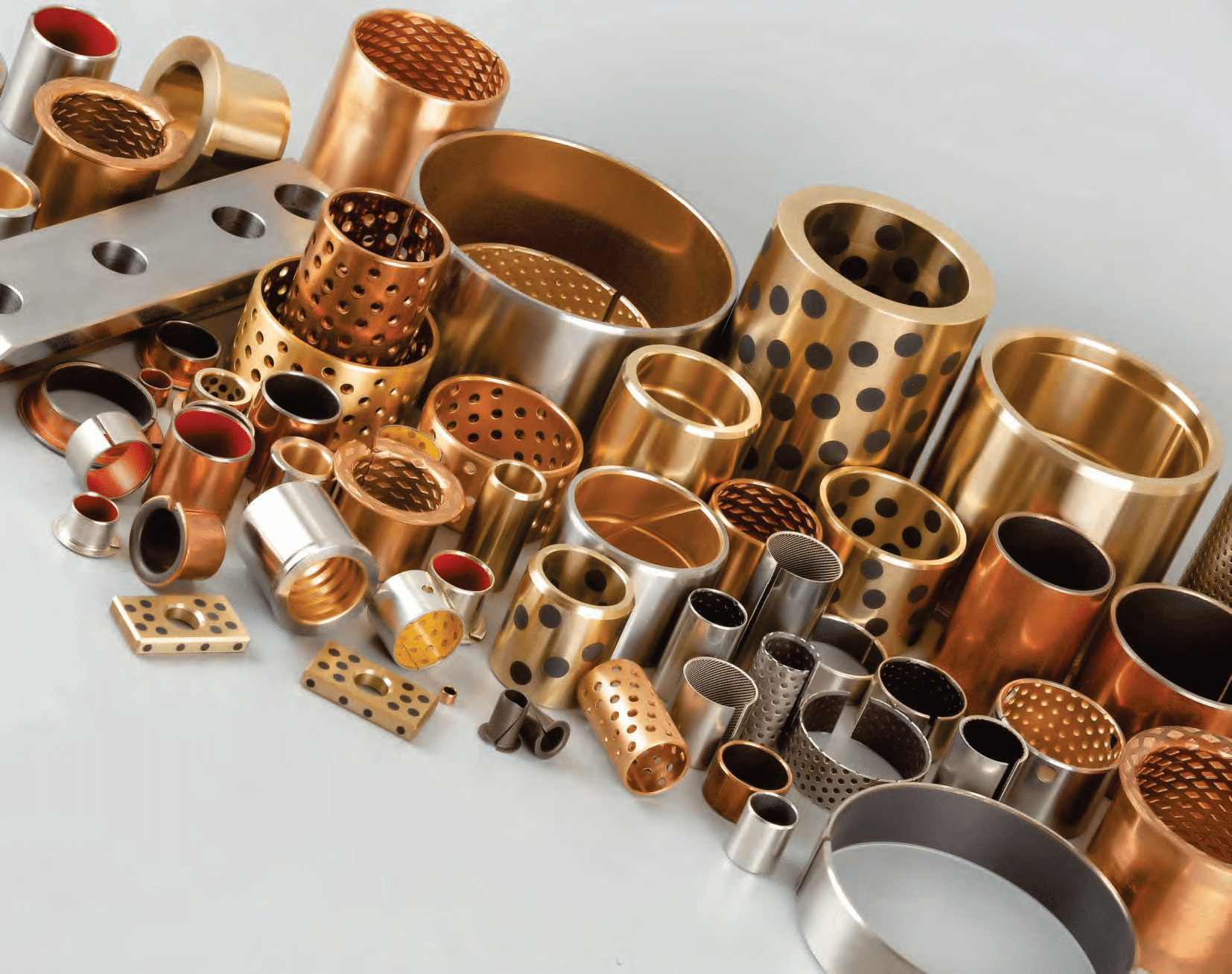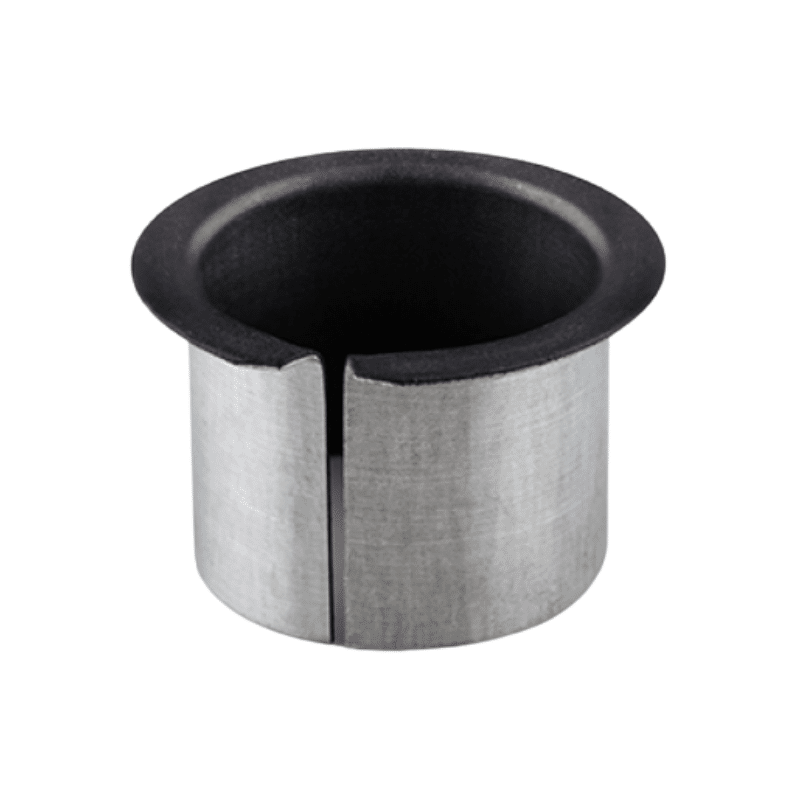bushing deisgn, Light weighting stainless steel bushing solutions
custom-made, high-quality stainless steel bushings that are designed to optimize performance, especially in harsh and corrosive environments.
These self-lubricating bushings are part of driving the future of mobility, providing friction reduction in various types of machinery and vehicles. They are made with Stainless Steel 316, a type of steel known for its superior corrosion resistance. This makes them suitable for conditions that are harsh and highly corrosive. The Stainless Steel 316 Bushing is coated with PTFE (Polytetrafluoroethylene), a polymer that has an extremely low friction coefficient, which further enhances the self-lubricating capabilities of the bushing. This combination of stainless steel and PTFE creates a bearing that is both durable and low-friction. These bearings are lead-free, which makes them a safer choice for both people and the environment. Additionally, they have several key resistance properties:
Product Quality Index
Energy Generation
Switch from Steel Bushings – Composites Stainless Steel Bearing Self Lubricating Bush
SF-1 and SF-1S are both types of self-lubricating bearings, but they have some differences in their composition and manufacturing process. SF-1S is a three-layer composite structure. It consists of a stainless steel layer, a copper powder layer, and a layer of PTFE (polytetrafluoroethylene). The sintering method is used to bond these layers together. This type of bearing offers excellent lubrication properties and is suitable for heavy loads, low speeds, reciprocating or swinging motions, and environments where it is difficult to form an oil film. SF-1S bearings are also resistant to water and acid erosion. They are commonly used in metallurgical continuous casting machines, steel rolling equipment, mining machinery, ships, steam turbines, water turbines, injection molding machines, and production lines.
On the other hand, SF-1SS is a two-layer composite structure. It consists of a stainless steel layer and a layer of PTFE. However, the bonding process used is spraying instead of sintering. SF-1SS bearings also provide self-lubrication and can withstand heavy loads, high temperatures, and challenging lubrication conditions. They are resistant to water and acid erosion as well.
Both SF-1S and SF-1SS bearings are designed to be oil-free and have longer working lives compared to ordinary sliding bearings. They offer high bearing capacity, impact resistance, and self-lubricating properties. These characteristics make them suitable for applications where oil and energy savings are desired.
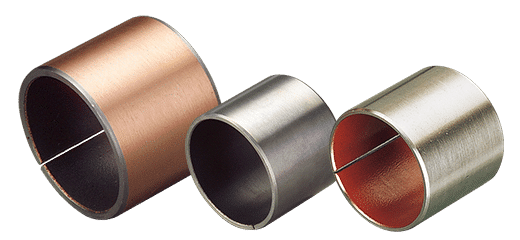
CHOOSE YOUR BUSHING MATERIAL
Self-lubricating stainless steel bushings manufactured in China provide a robust and economical option for diverse sectors, including agriculture, construction, and automotive. Engineered to withstand high-load scenarios and varying temperature ranges, these bushings are built to minimize maintenance due to their self-lubricating characteristics. In selecting the appropriate bushing type and size for a particular application, it is crucial to evaluate aspects such as the capacity to bear loads, the range of operating temperatures, and the specific environmental factors involved. The inherent self-lubricating feature of these bushings plays a key role in ensuring consistent and efficient performance of machinery and equipment across a multitude of applications.

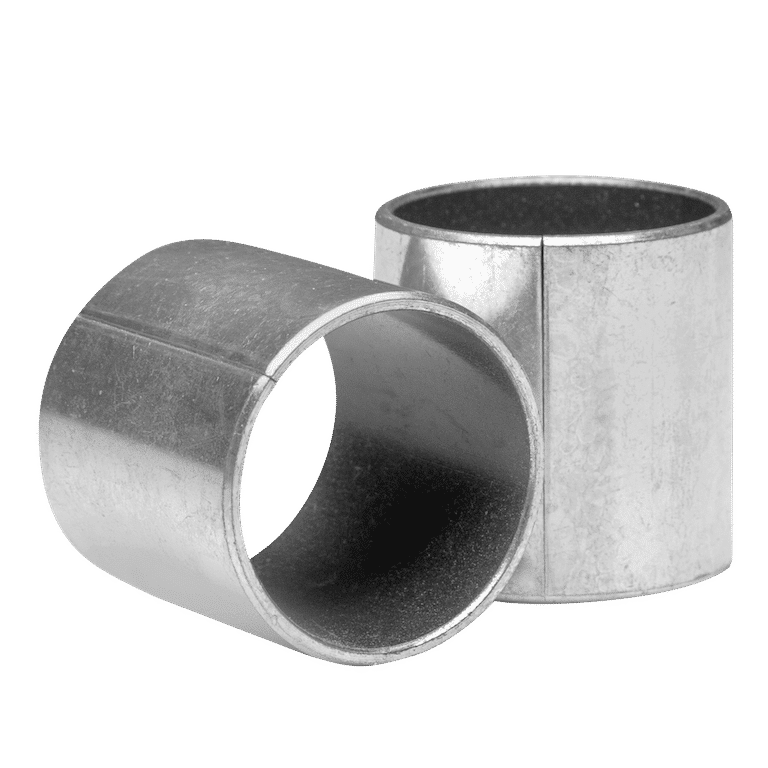
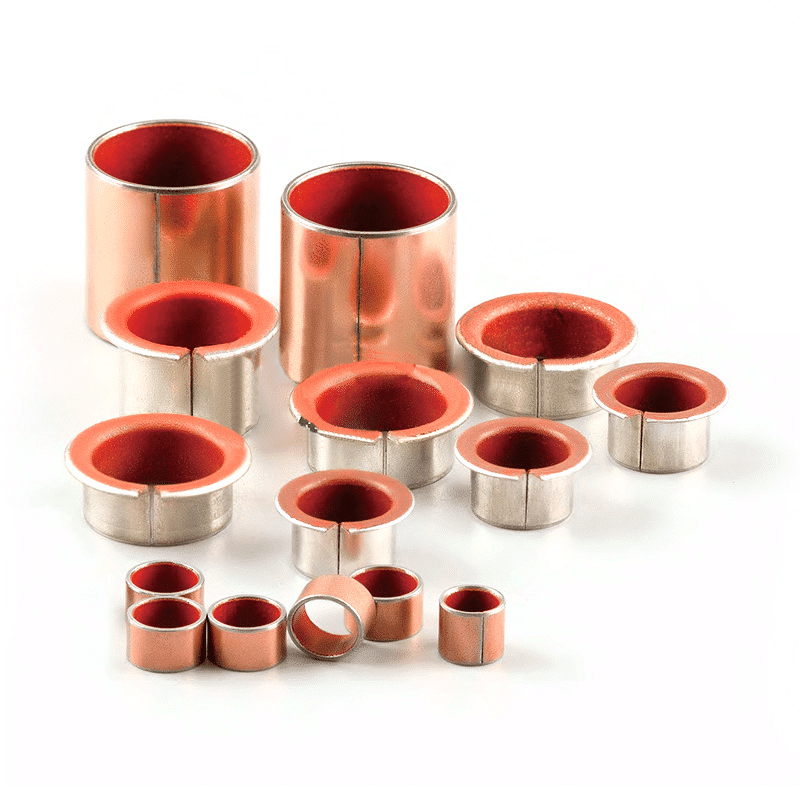
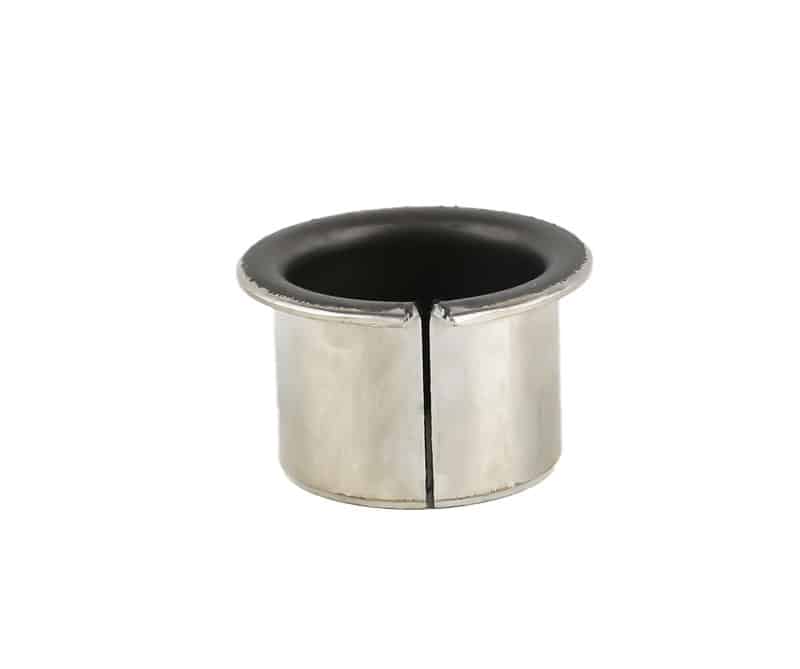
This stainless steel bushing is a composite of multiple layers, each with its own role:
- Stainless Steel Backing (0.7-2.3mm): This forms the sturdy, durable, and corrosion-resistant base of the bushing. Stainless steel is known for its strength and resistance to rust and other forms of corrosion.
- Porous Bronze (0.2-0.3mm): This layer is added to the stainless steel backing. Bronze is a good conductor of heat, which helps to dissipate heat during operation, and the porous nature allows it to hold and gradually release the PTFE and polymer lubricant.
- PTFE with Polymer (0.01-0.03mm): This is the top layer that comes in direct contact with the moving parts. PTFE (Polytetrafluoroethylene) is a type of polymer that has one of the lowest friction coefficients of any solid, which means it’s excellent at reducing friction. The polymer mixed with the PTFE also helps in reducing friction and enhancing the self-lubricating property of the bushing.
These layers, together, make up the bushing and each contributes to its properties. One of the key benefits of this structure is its low friction coefficient, which helps to reduce wear and extend the lifetime of both the bushing and the parts it’s interacting with. Additionally, the structure offers good anti-corrosion properties, making it suitable for use in environments where it might be exposed to corrosive substances. The bushing is available in various sizes, meaning it can be used in a wide range of applications, wherever a specific size of bushing is required.
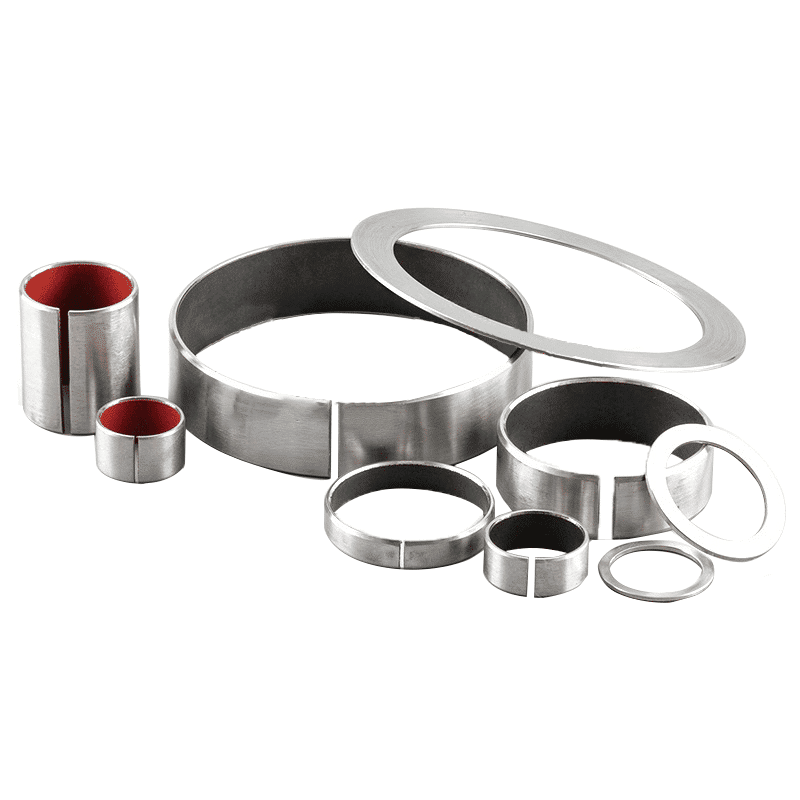
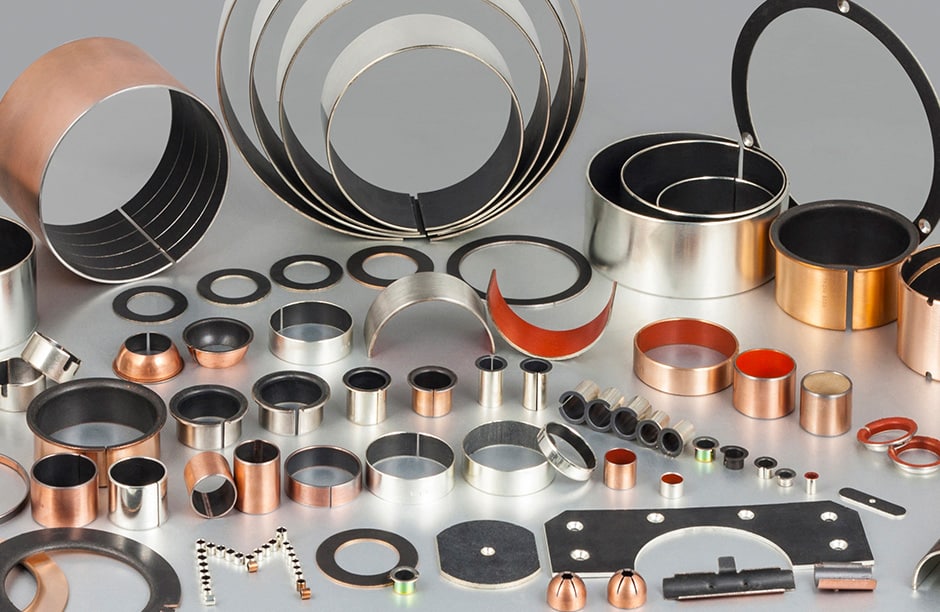
The properties of wrapped stainless steel bushing
These properties make this wrapped stainless steel bushing highly versatile and capable of being used in a variety of challenging applications, thanks to its high load capacity, wide temperature range, and low friction coefficient.
- Load Capacity (140N/mm^2): This is the maximum load or force that the bushing can withstand without failing. The load capacity of this bushing is 140 Newtons per square millimeter, which is quite high, indicating that it can support substantial weight or force.
- Temperature (-195~+280°C): This is the operating temperature range of the bushing. It can function effectively in temperatures as low as -195 degrees Celsius and as high as +280 degrees Celsius, making it suitable for use in a wide range of environments.
- Speed Limit (2.5m/s): This is the maximum speed at which parts can move against the bushing without causing damage or excessive wear. The speed limit of this bushing is 2.5 meters per second.
- Friction Coefficient (0.04~0.20): Also represented as “μ”, this value indicates the amount of friction that occurs between two surfaces. A lower coefficient means less friction, which generally leads to less wear and a longer lifespan for the bushing. This bushing has a friction coefficient range from 0.04 to 0.20, which is relatively low and thus beneficial for reducing wear.
- PV Limit (dry) (3.6N/mm^2.m/s): The PV limit is a measure of the maximum mechanical stress that the bushing can withstand without failure when it is dry. It is calculated as the product of pressure (P) and velocity (V). This bushing has a dry PV limit of 3.6 Newtons per square millimeter per meter per second.
- PV Limit (oil) (50N/mm^2.m/s): This is the PV limit when the bushing is lubricated with oil. The oil reduces friction and therefore allows the bushing to withstand a higher PV limit. In this case, the limit is 50 Newtons per square millimeter per meter per second.
bushing deisgn, Light weighting stainless steel bushing solutions
Stainless steel bushings
Stainless steel bushings can provide the right balance for success in various industries such as agriculture, construction, automotive, and more. Stainless steel bushings are available in a wide range of sizes, from 0606 (6x8x6mm) to 300100 (300x305x100mm), which makes them versatile for different uses. The variety of sizes allows them to fit into numerous applications, be it small machinery in an automotive application or large-scale agricultural equipment. Learn more about our expertise & capabilities of stainless steel bushing.
Product Quality Index
Energy Generation
We offer a large selection of graphite copper sleeve and flange bushing.
MAINTENANCE Self-lubricating flange bushing, highly durable, and reliable bushing supplier with or without graphite plugged. Learn more!
CUSTOM-MADE STANDARD PRODUCTS
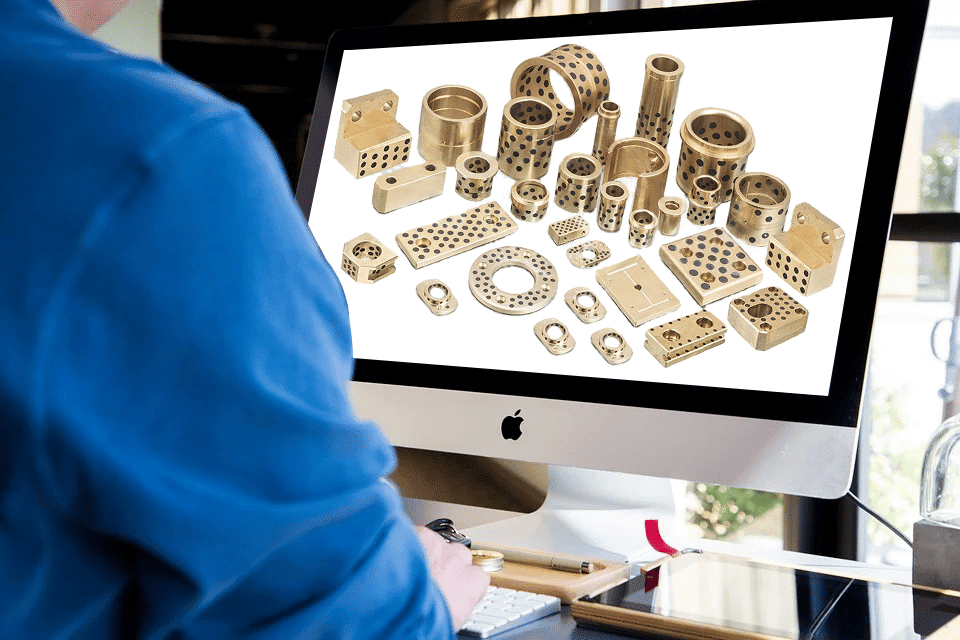
Learn More

